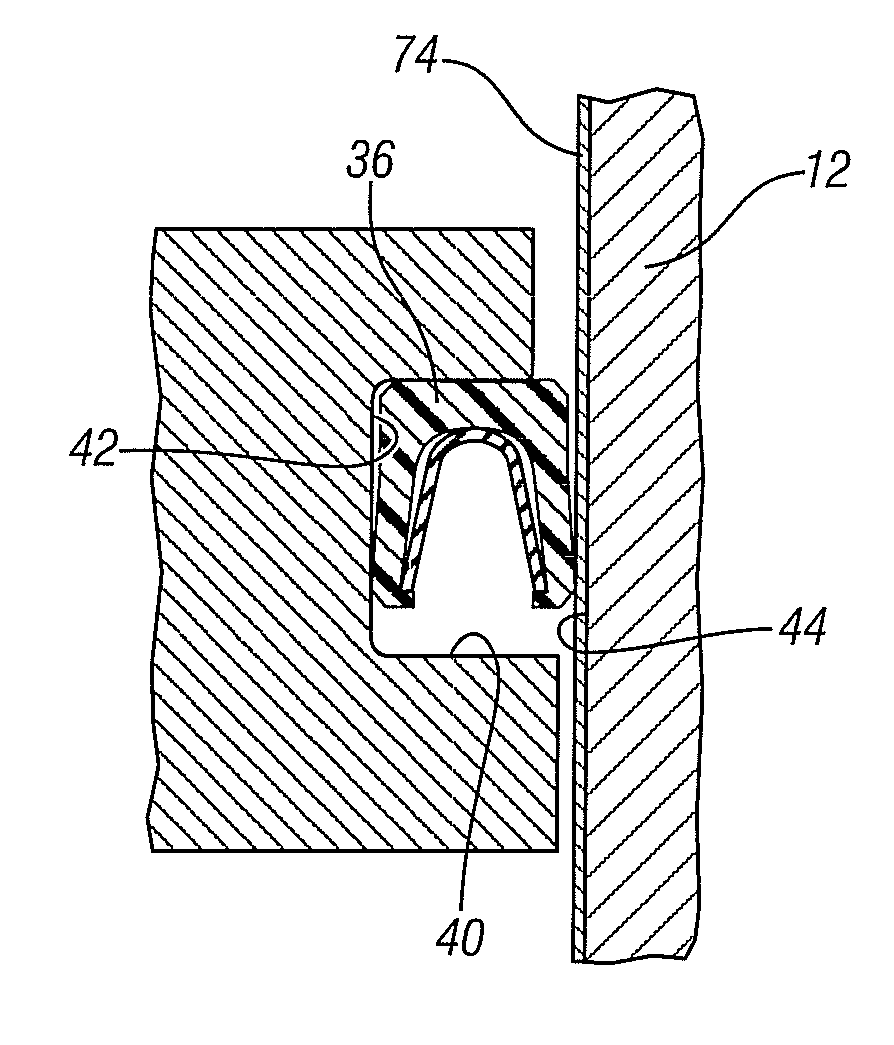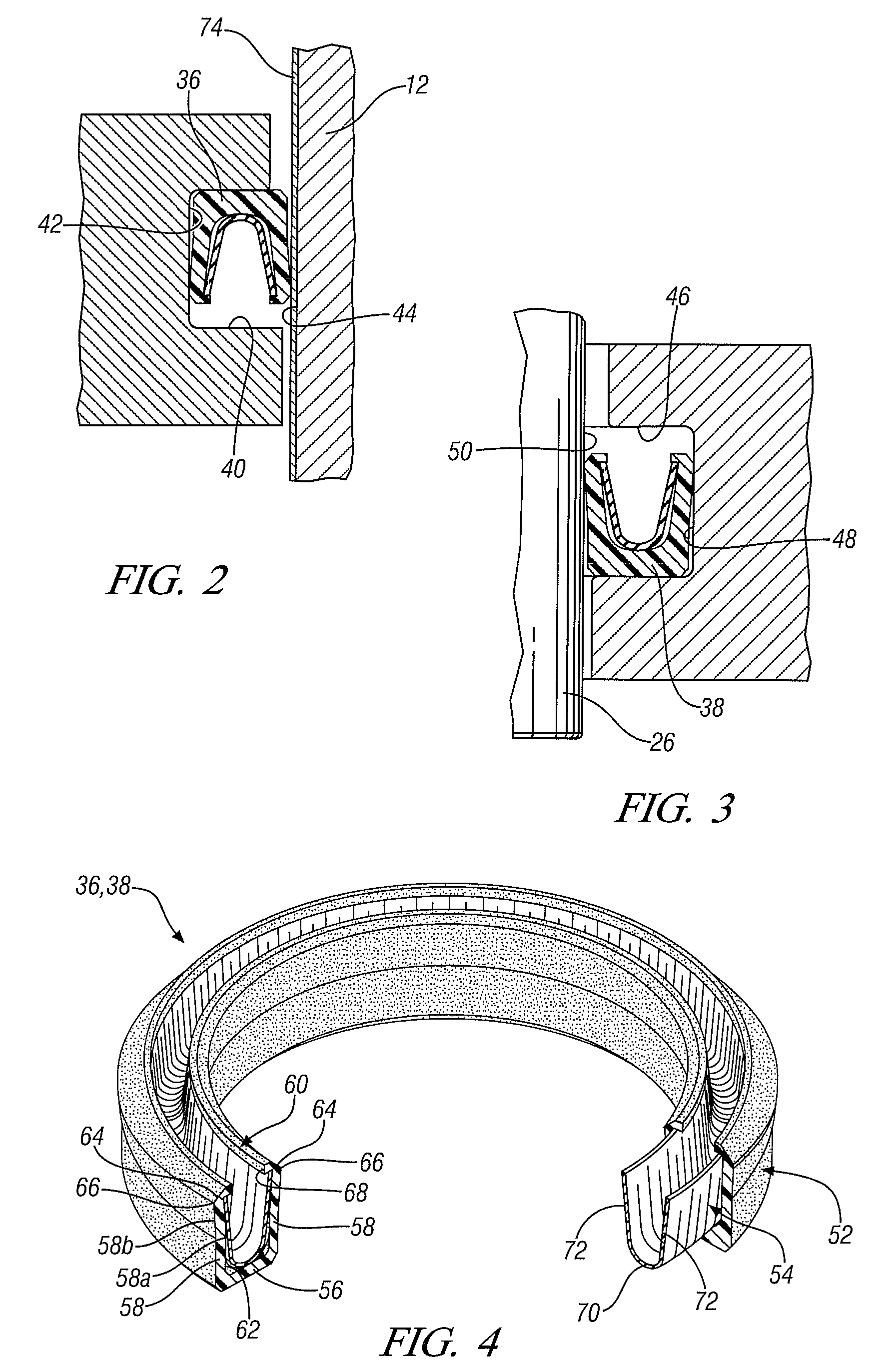Seal performance for hydrogen storage and supply systems
a technology of hydrogen storage and supply system, which is applied in the direction of piston rings, machines/engines, electrochemical machining apparatuses, etc., can solve the problems of promoting hydrogen gas leakage across, forming microscopic leak paths, and complex structural components, so as to reduce the surface roughness of the mating surface, controllable heating
- Summary
- Abstract
- Description
- Claims
- Application Information
AI Technical Summary
Benefits of technology
Problems solved by technology
Method used
Image
Examples
Embodiment Construction
[0019]The performance and durability of static and dynamic seals within hydrogen storage and supply systems can be improved using a spring-energized and plastic coated radial seal that engages a mating surface that has been treated by at least one of a variety of procedures. These treatment procedures include applying a hard, low-friction and hydrogen impervious layer to the seal mating surface, isotropic finishing, and electropolishing. The combination of this seal construction and the treatment of the seal mating surface helps reduce hydrogen leakage at the interface of the seal and the mating surface, and also helps reduce the onset of seal surface abrasions and wear particularly when the use of lubricants is prohibited. While the following discussion focuses primarily on treating seal mating surfaces, it is to be understood that other seal engaging surfaces—most notably seal gland surfaces—may also be treated with the disclosed treatment procedures to achieve similar results.
[00...
PUM
| Property | Measurement | Unit |
|---|---|---|
| temperatures | aaaaa | aaaaa |
| temperatures | aaaaa | aaaaa |
| pressures | aaaaa | aaaaa |
Abstract
Description
Claims
Application Information
 Login to View More
Login to View More - R&D
- Intellectual Property
- Life Sciences
- Materials
- Tech Scout
- Unparalleled Data Quality
- Higher Quality Content
- 60% Fewer Hallucinations
Browse by: Latest US Patents, China's latest patents, Technical Efficacy Thesaurus, Application Domain, Technology Topic, Popular Technical Reports.
© 2025 PatSnap. All rights reserved.Legal|Privacy policy|Modern Slavery Act Transparency Statement|Sitemap|About US| Contact US: help@patsnap.com



